
Do all your customers give you a five-star rating on online review forums?
Yes..No..or Maybe.
Customers these days expect more than just routine delivery of products and services. They value round-the-clock customer support, expect the product features to be top-notch, and cherish organizations that value their feedback.
Despite your best efforts, you may find that not all your customers promote your brand in their social circles. Many detractor customers distance themselves from your business and even post negative comments online. Some passive lot are indifferent towards your services.
How to deal with these three groups of customers for the benefit of your business?
The answer lies in conducting a regular net promoter score survey to track customer loyalty. This survey relies on a numeric score between (0-10) to segment customers into promoters, passives, and detractors.
Let’s understand how to calculate net promoter score, the purpose of NPS calculation, types of NPS surveys, and more. Let’s start with the basics of net promoter score.
Defining Net Promoter Score
Developed by Fred Reichheld, Bain & Company, and Satmatrix in 2003, NPS is a tool to measure customer experience and loyalty. It involves asking the customer one simple question rated on a scale of 0-10.
“How likely will you recommend our { organization name } to a friend or family member?”
The customer responses give a first-hand account of their satisfaction levels: Is the customer happy with your product or service? Were their queries answered on time? Did they have a good experience? And more.
By analyzing the NPS scores, you can make actionable changes in your organization like training your customer support team to be proactive in handling complaints, hearing out your customers politely, maintaining self-help knowledge base articles for your products, and more.
You can calculate net promoter score by using a formula that is common for all industries worldwide.
How to Calculate Net Promoter Score
Net promoter score calculation is a multi-step process that starts with creating an NPS survey to analyze the responses.
Let’s understand the process in detail:
Step 1: Create and Send a Net Promoter Score Survey
A net promoter score survey puts forth a single customer loyalty question, “On a scale of (0-10), how likely will you recommend our products/services to a friend or family member?” This question can be sent out to customers in various ways: through an email survey, a website pop-up, or a poll on social media.
Pro-Tip: Make sure that you add a follow-up ‘comment’ question to understand why customers gave you a specific NPS score.
These days, a reliable net promoter score software like ProProfs Survey Maker makes it easy for you to create a net promoter score survey. All you need to do is select the customizable survey templates ranging from a customer satisfaction NPS, post-sale NPS, etc. You can also personalize the survey by adding your logo and images.
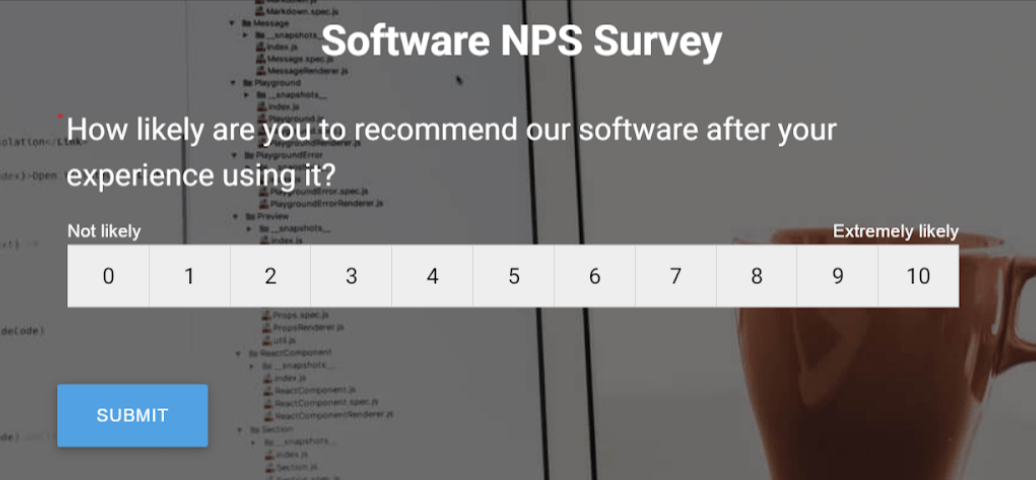
Step 2: Segment the Responses
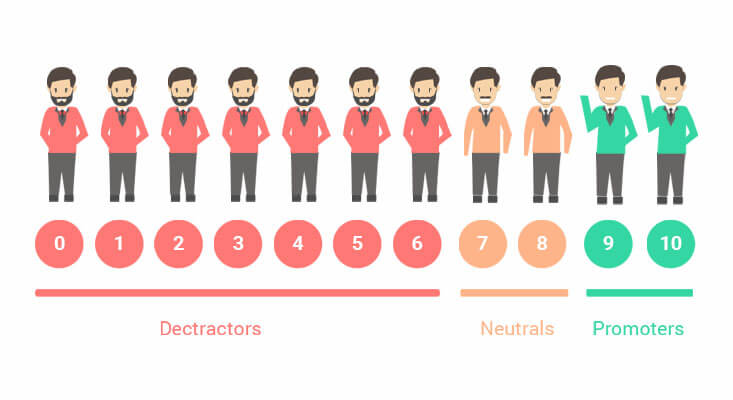

The next crucial step in the net promoter score calculation process is segmenting your audience into three categories based on their responses:
(a) Promoters:
Promoters are your happy customers who give you a score of 9-10. These are your most loyal customers and will recommend your products to their family and friends without hesitation.
(b) Passives:
The customers who rate you 7 or 8 are your passives. While they are satisfied with your products and services, these customers can’t be trusted to be loyal at present. Given an opportunity, they will switch to your competitors instantly.
(c) Detractors:
The customers who rate you between 0-6 are your detractors. They are your most dissatisfied customers and more likely to churn. They are responsible for most of the negative feedback that you receive, and you must address their concerns at the earliest.
Step 3: Apply the Standard Formula to Calculate Net Promoter Score
The net promoter score formula makes use of two main metrics for calculation:
- Percentage of promoters
- Percentage of detractors
The difference decides your NPS between the percentages of your loyal and detractor customers.
(% NPS) = (% promoters) – (% detractors)
Let’s simplify this with an example.
Imagine 100 people took your NPS survey. Of these, 60 gave you a score between (9-10) while 20 rated you in the range (0-6). Then,
Percentage of promoters = 60/100 = 0.6
Percentage of detractors = 20/100 = 0.2
(% NPS) = (0.6 – 0.2) = 0.4 or 40
After a detailed understanding of net promoter score calculation, it is time to use the feedback to make meaningful changes in your organization.
Understanding Net Promoter Score Results?
Net promoter score is a significant measure of your customer’s enthusiasm in using your products and services. You can use this valuable information to observe changing customer behavior trends and enhance the quality of your offerings.
(a) Predict Customer Churn
How satisfied are your online consumers? Are they pleased with your services or merely give an excellent answer to please you? With the net promoter score, you get a measurable data on the three-class of customers: promoters, passives, and detractors. By analyzing all the groups individually, you get to make the correct business strategy while approaching the three groups.
For example, if you have a large chunk of detractor customers, you can prioritize your business plan and reach out to them individually to understand their concerns. If not followed up, you could face a considerable customer churn and incur business losses.
(b) Enhance Quality
NPS gives you an option to add an open-ended follow-up question to ask your customers why they gave you a particular score. With the in depth analysis of these qualitative answers, you understand your customers’ real needs and expectations.
For example, some customers may be looking for a more prompt customer service, while others might want to see more advanced product features. If most customers have a common concern, it could be a significant problem, and you need to sort it out at the earliest.
(c) Track Sentiments Trend
When you conduct NPS surveys over a period of time, you get to see the varying sentiments graph of your customers. For example, when you perform a post-purchase NPS survey, your customers might give you a favorable score. But, six months down the line, if they are not happy with using your product, they will provide you a low score. They will turn into a detractor, and their risk of churning increases.
Based on when and how you ask a net promoter score question, there are different types of NPS surveys.
NPS Survey Types
You have the option to either survey the online consumers just after they have converted to your customers or after they have used your products/services for a while.
(a) Relationship Surveys
You can conduct a relationship survey after a customer has used your product for a long time. By dropping an NPS survey on a monthly, quarterly, or a semi-annual basis, you can collect a comprehensive feedback on different aspects of your offerings.
For example, maybe one set of customers liked your product upgrade while others might have found it challenging to set up. If a majority of your customers support the product upgrade, it has well appealed to your audience, and you need not make any changes.



(b) Transactional Surveys
Using a transactional survey, you can collect customer feedback at every touchpoint, like after an online purchase, customer support call, subscription upgrade, and much more. This is an ongoing way to understand if your customers like your products/services or are indifferent to them.
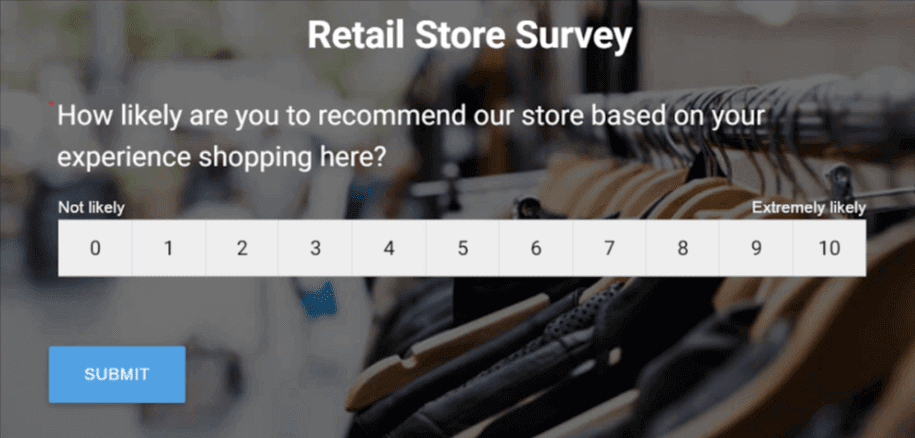

You also need certain best practices to ensure that you collect fruitful feedback.
Best Practices to Conduct NPS Surveys
While conducting an NPS survey, you need to know what questions to ask and when to ask them. Let’s understand this in detail.
(a)What’s the Ideal Length of an NPS Survey?
When creating a net promoter survey, there are two crucial things you must remember:
- Go beyond “how likely are you to recommend…” questions.
- Keep your questions short, crisp, and precise.
Shorter the survey, customers are more likely to take a survey. With questions that require a detailed response, the possibility of customers not taking the survey increases as they see it as a waste of time and effort.
Pro-Tip: Keep the number of questions in the NPS survey between 3-5. Ideally, this number is enough to get valuable customer insight and NOT scare them away.
(b) What Questions Should I Ask
Keep it simple. It is essential to ask questions that give you all the answers, but what if you could ask questions that don’t require essays as answers? Here is an example that best explains what to ask in NPS surveys:
- Thanks for rating our product/service. Please let us know how we can improve our services/products.
- Our Website
- Overall Experience
- Transitions
- Content Quality
- Website Optimization
- Website Speed
- Other
- Range of Products/Services
- Product/Service Quality
- Booking Experience
- Other
Pro-Tip: Ensure all points have accurate and significant touchpoints. This way, you can pinpoint the main difficulty faced by your customers and improve upon it quickly.
There are different ways to measure the net promoter score for your business. Let’s see how.
NPS Calculation Methods
You can calculate NPS using a google spreadsheet, NPS software, and an online calculator.
1. Calculate Net Promoter Score with NPS Software
An NPS survey tool does all the work for you. It analyzes the responses and calculates the NPS on its own. For example, in ProProfs Survey Maker, NPS calculation can be done by analyzing the response of the following question:
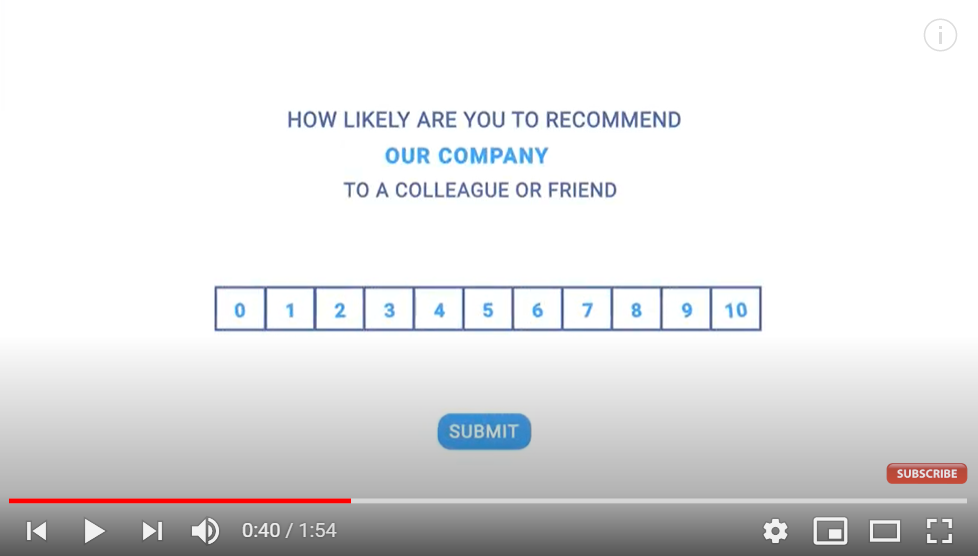

With the responses to such NPS questions, the net promoter score survey software calculates your score and gives you valuable insight, including the number of passives, promoters, and detractors.
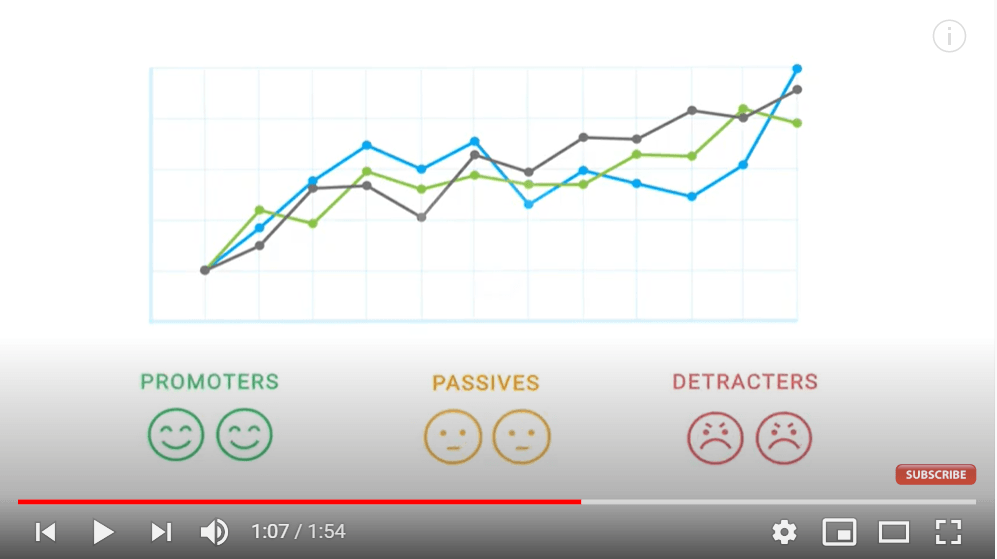

2. Calculate Net Promoter Score with Online Calculator
In this method, you need to download a net promoter score calculator online. After this, you need to just input the NPS results into it. There you have it, the results are calculated automatically.
3. Calculate Net Promoter Score in Google Spreadsheet or Excel
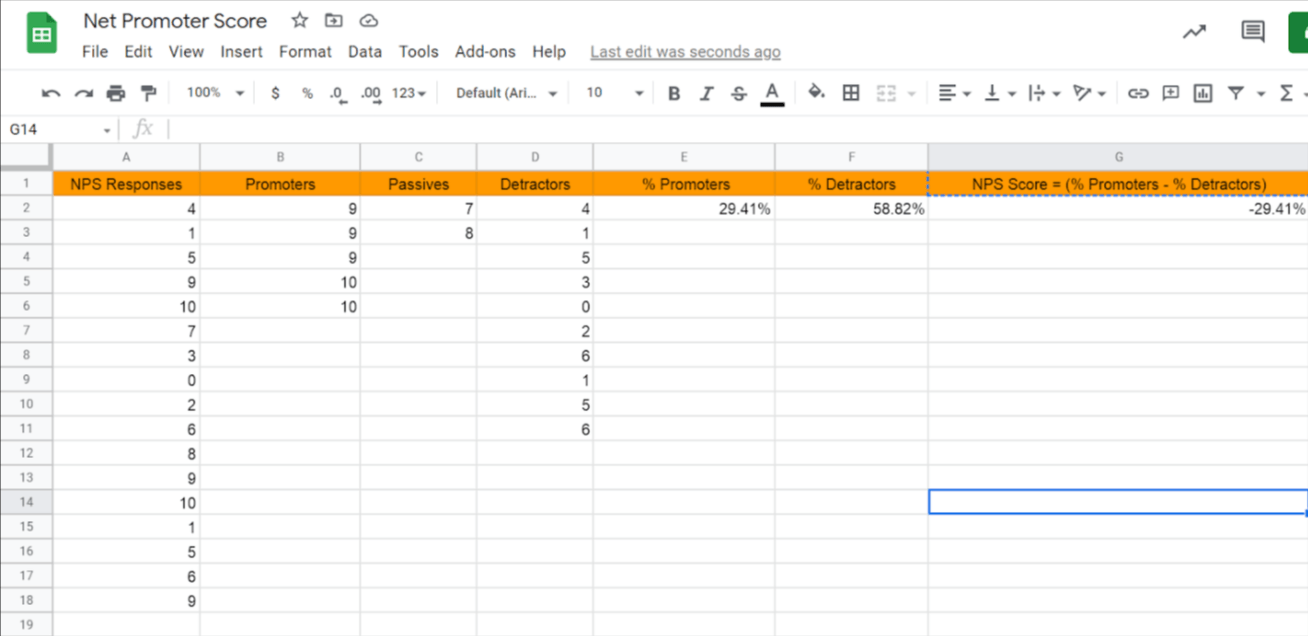

Here, you can use the excel rows and columns to input the net promoter score raw data and then apply the formula to calculate the score. Let’s understand the steps in detail:
- Add the promoters – respondents who scored 9 and 10
- Add the detractors – those with responses 0 to 6
- Calculate the percentage – Number of Promoters/Total Number of Respondents
- Repeat the process for detractors
- Calculate NPS using the net promoter score formula
The average NPS varies from industry to industry. Let’s understand NPS scores for different businesses.
What is the Average Net Promoter Score?
Any company prefers to have more promoters than detractors. A large number of supporters boosts the brand image and contributes to higher business growth. Low scores can ruin your reputation, and you may not be able to attract more customers.
So, what is a good net promoter score?
The average net promoter score varies from company to company and industry to industry. Overall, NPS scores fall in three categories:
- Bad ( 0 – 30 )
- Good ( 30 – 50 )
- Above 50
- Above 70
A study shows the net promoter score benchmarks of different industries in the world.
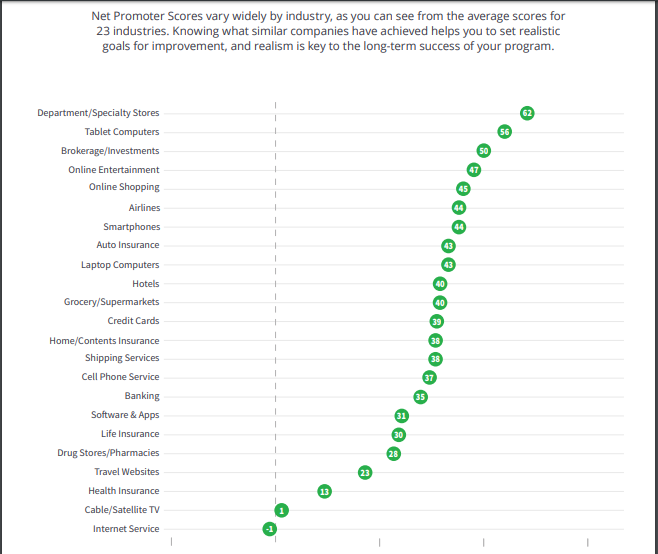

Image Source: NICE
NPS Score Calculation: Do it Right By Deploying an NPS Tool!
It’s always more expensive to acquire a new customer than to retain an existing one. Hence, it is necessary to understand your customer loyalty at every stage of their lifecycle. You can easily make use of a relational or transactional NPS survey to gather their feedback about your offerings.
The NPS survey is simple and straightforward with a singular question on a scale of 0-10. You can use an online calculator, excel/spreadsheet, or automated software to calculate the NPS score. Keep in mind that a follow-up comment question will help you understand why your customers gave you a particular score.
Now, on a scale of 0-10, how likely are you to share this article?
Do provide your feedback!
If you are looking for a net promoter score software to start with your first NPS survey, you could try out the custom survey templates from ProProfs Survey Maker.
FREE. All Features. FOREVER!
Try our Forever FREE account with all premium features!







